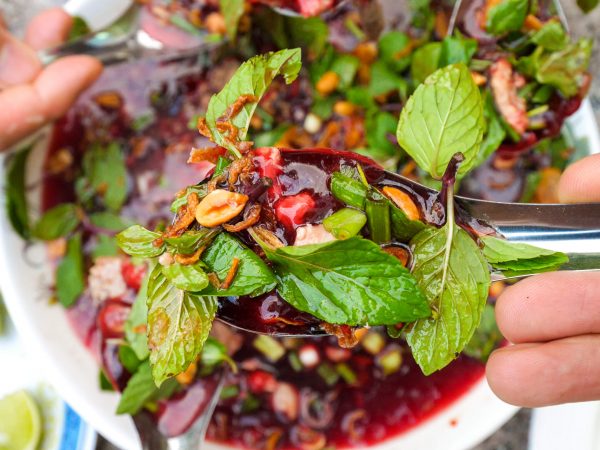
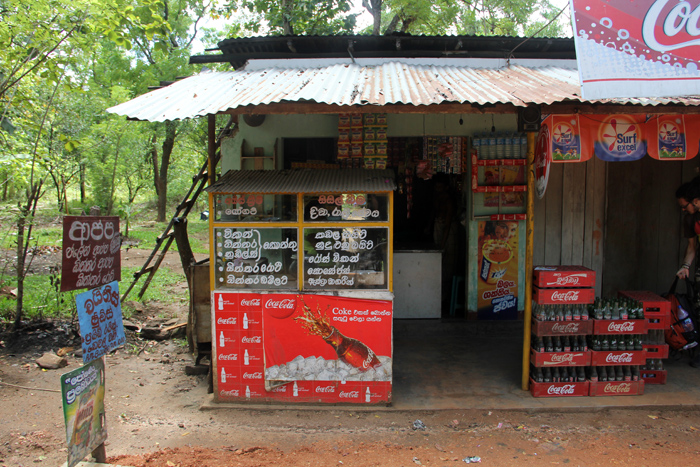
It’s restaurants like these that scream to be eaten at.
Often it’s little more than a shack of antique wood covered in rusty tin and sponsored by Coca Cola. In Nairobi, some of the best nyama choma is served out of very similar looking establishments.
For me, the lure of the setting and the fragrance of the food is stronger than a choir of sirens calling me by name.
This particular hole in the wall restaurant near Sigiriya, Sri Lanka was where I found and devoured one of most famous snacks / foods in the country: Sri Lankan hoppers (also known sometimes as Appa).
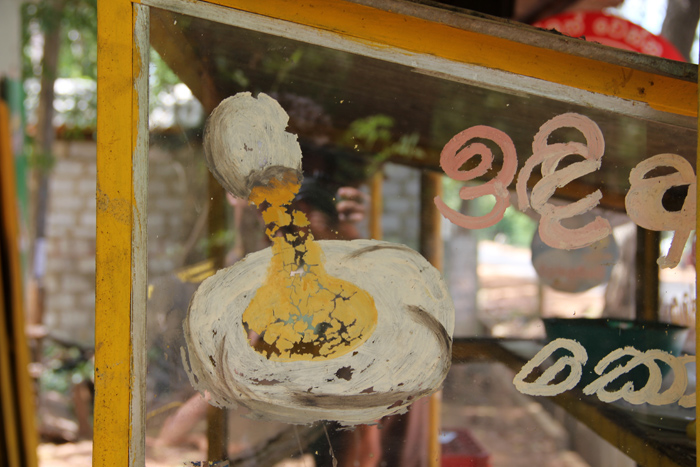
Another positive sign of a great street food restaurant is when there are hand painted signs of the particular food served. I surely do enjoy food art!
When I first heard the name “hoppers,” I was imagined something a little more like Thai dancing shrimp, or the notorious bug cart. They’re all hoppers, aren’t they?
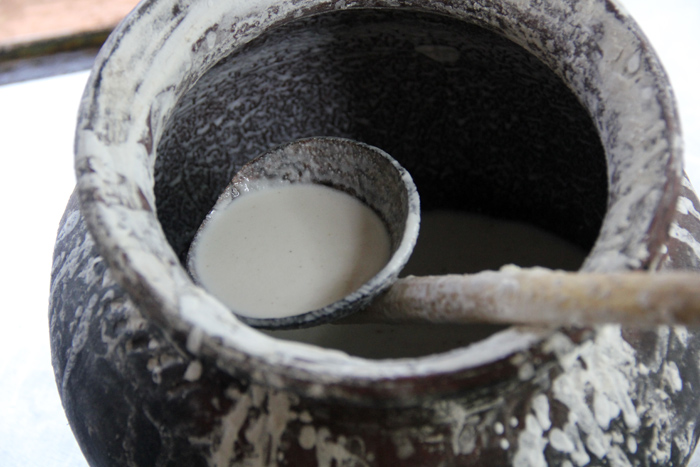
What are Sri Lankan Hoppers?
So before we dig in to this Sri Lankan specialty (with a funny name), I’m going to do my best to explain to you what exactly a hopper is.
It all begins with a pancake like batter that is mixed up in a clay-pot. The batter is a combination of rice flour, wheat flour, coconut milk, and sometimes a splash of toddy (Sri Lankan palm wine) to give it a subtle tinge of sourness.
Get exclusive updates
Enter your email and I’ll send you the best travel food content.

In my opinion (and you’ll notice that it’s probably a fact when in Sri Lanka) it’s a requirement to cook Sri Lankan hoppers in a traditional wrap around sarong and shirtless.
At least I sure know that I would wear an identical outfit if I ever get a chance to cook Sri Lankan food!
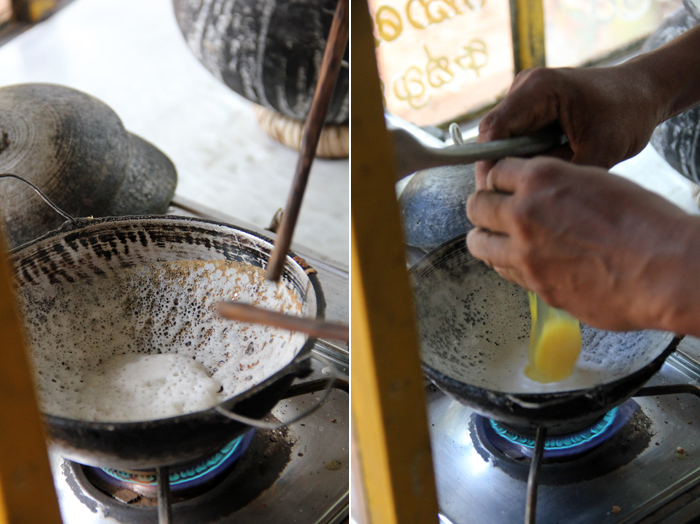
Hoppers are cooked in small rounded pans, like a miniature version of an “Asian wok.” The metal is thick on the bottom so it produces a deep encircling heat.
A scoop of the runny batter is dropped in the preheated pan (with no oil), and the chef makes a few artistic motions so the batter coats the entire pan, but doesn’t fall out the edges.
At this point, if you ordered your hoppers without an egg, it will be taken out of the pan. If you did get an egg (I’d highly recommend it!), this is the moment when an egg is cracked right into the middle of the mess.
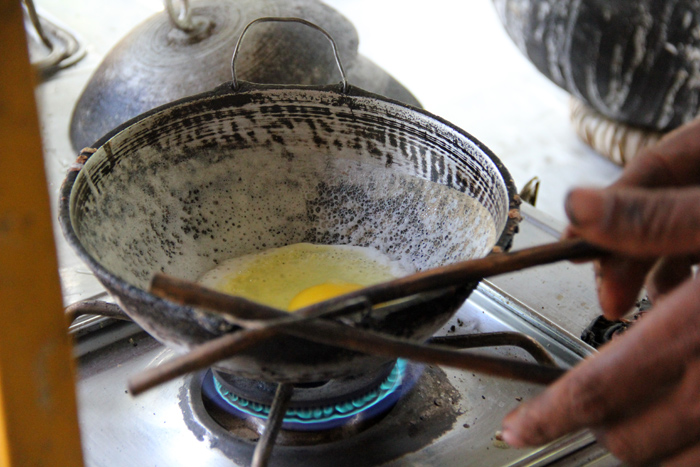
The hoppers are cooked a little longer, making sure the egg doesn’t get too dried out before being removed from the heat (cooks use a variety of instruments, this guy was using some Sri Lankan chopsticks!).

When the hopper is deemed ready, the cook frees the edges of the pancake and because the pan was so piping hot, the hopper pops out clean and beautiful.
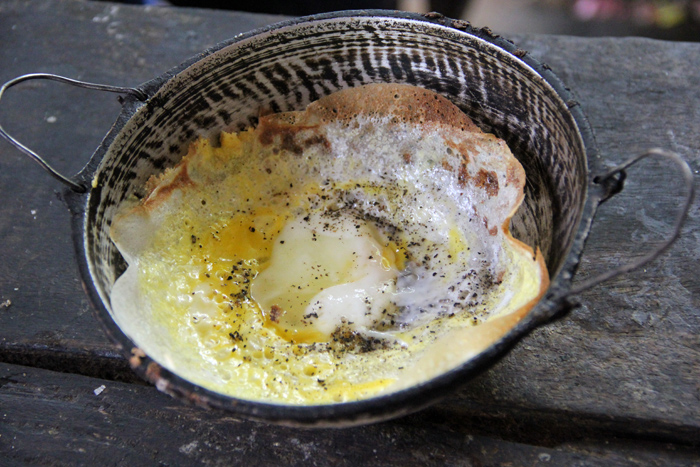
Sri Lankan egg hoppers should be cooked so the egg yolk is still runny – you want it to be oozy and delicious.
After taking the hopper of the heat, the cook sprinkles on just a pinch of salt and black pepper to season.
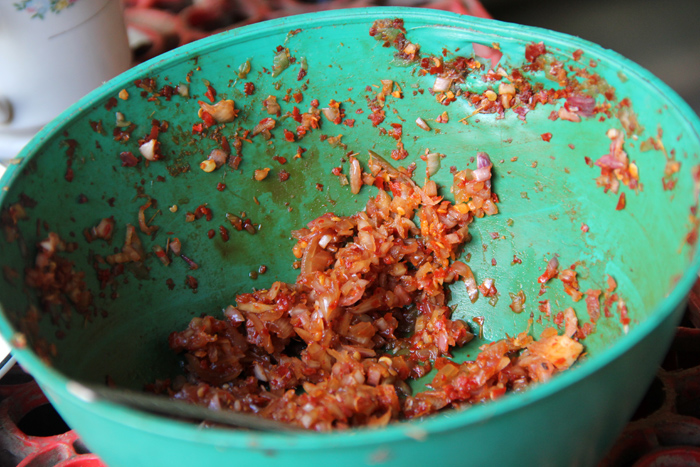
There are a number of different things that you can eat along with Sri Lankan hoppers. Some may choose to eat the precious pancakes with just salt and pepper, others may eat them with a bit of curry sauce, and others choose the “sambol” option.
The particular sambol (or sauce) pictured above is known as Lunu Miris, a mixture of red onions, garlic, salt and loads of chili powder – this is my choice preference condiment for Sri Lankan hoppers.
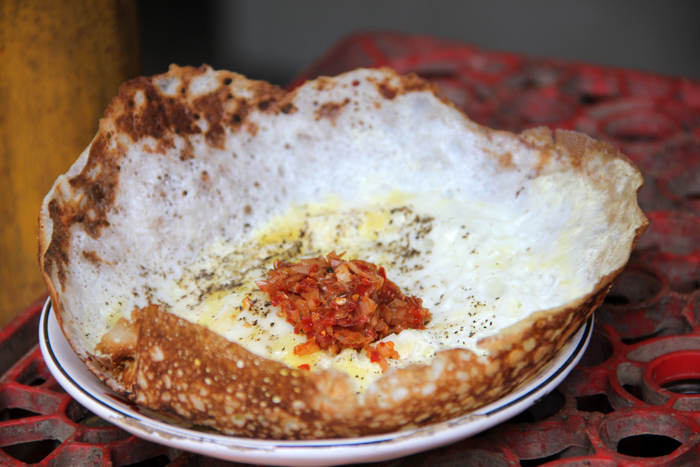
So there you have an authentic Sri Lankan hopper, sitting beautifully on a plate and ready to be devoured.
Cooked correctly, Sri Lankan hoppers should be spongy and airy in the center (it really reminded me of Ethiopian injera) and thin, crunchy and flaky on the edges. The contrast of textures is possible only with the rounded hopper skillet.
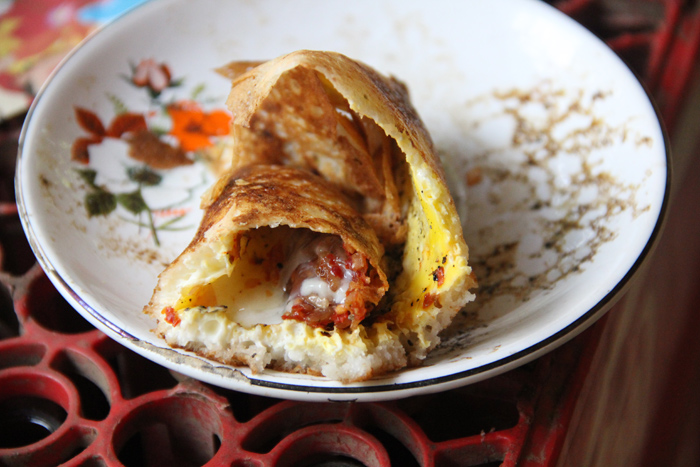
There is in full glory, one of the many hoppers stuffed with lunu miris that I gobbled down at a ferocious rate.
Though hoppers are often considered a breakfast meal in Sri Lanka, I found many places around the country to serve hoppers throughout the day. A stack of plain hoppers are also quite popular as a late afternoon snack, during tea time.
If you love food be sure to check out this list of best Sri Lankan food.
Get exclusive updates
Enter your email and I'll send you the best travel food content.



